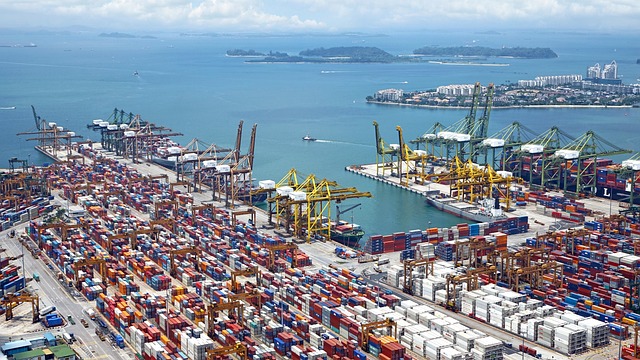- The World Trade Organization revised its 2023 trade growth forecast downward due to global manufacturing challenges, with only a modest 0.8% growth expected this year
- The trade slowdown stems from persistent inflation, tighter monetary policies, and property market issues in major economies like the United States and the European Union. The conflict in Ukraine has further complicated the situation
- Despite the slowdown, experts anticipate a rebound in trade growth next year, accompanied by stable GDP growth
- Sectors sensitive to business cycles are expected to stabilize as inflation eases and interest rates decrease
- There are emerging signs of supply chain fragmentation, posing a potential threat to the positive outlook for 2024. This includes a decrease in the share of intermediate goods in world trade and a shift in Asian bilateral partners in US trade
- WTO Director-General Ngozi Okonjo-Iweala emphasized the need for WTO members to strengthen the global trading framework by avoiding protectionism and fostering a resilient and inclusive global economy
The World Trade Organization (WTO) cut its 2023 trade growth forecast amid a global manufacturing slump.
In its latest trade forecast released on October 5, WTO revised its outlook for worldwide merchandise to 0.8% growth this year, significantly lower than the previous forecast in April of a 1.7% increase.
RELATED READ: WTO sees ‘subpar’ 1.7% trade growth in 2023
Fortunately, the outlook for 2024 remains relatively steady, with a 3.3% growth projection.
In addition to trade, the WTO has taken a close look at the state of the global economy. They anticipate real-world GDP to grow by 2.6% this year at market exchange rates and 2.5% in 2024, as outlined in the “Global Trade Outlook and Statistics — Update: October 2023.”
So, what has been causing this slowdown in global trade and output? Several factors have contributed to the decline, including persistent inflation, tighter monetary policy, and challenges in property markets.
These problems are especially clear in the United States, European Union, and China. The ongoing conflict in Ukraine has made trade even more clouded. This decrease is not isolated, but affects many countries and a wide range of goods.
However, there is a ray of hope on the horizon. Experts predict trade growth will gain momentum next year, accompanied by gradual but stable GDP growth. Sectors sensitive to business cycles are expected to stabilize and rebound as inflation eases and interest rates begin to decrease.
But there is a catch. Signs are emerging of supply chain fragmentation, a potential threat to the positive outlook for 2024.
For instance, the share of intermediate goods in world trade, which serves as an indicator of global supply chain activity, dipped to 48.5% in the first half of 2023. This contrasts with the previous three-year average of 51.0%.
Additionally, the share of Asian bilateral partners in US trade for parts and accessories, a critical subset of intermediate inputs, fell to 38% in the first half of 2023, down from 43% in the same period last year.
WTO Director-General Ngozi Okonjo-Iweala voiced her concerns regarding this slowdown. She emphasized the far-reaching consequences it could have on people’s living standards worldwide.
Okonjo-Iweala urged WTO members to seize the opportunity to fortify the global trading framework by avoiding protectionism and fostering a more resilient and inclusive global economy. She stressed the importance of maintaining a stable, open, predictable, rules-based, and equitable multilateral trading system, especially for the benefit of developing countries.
WTO Chief Economist Ralph Ossa noted that while trade fragmentation linked to geopolitical tensions is evident, broad deglobalization has not yet taken hold. Data suggest goods are still being produced through complex supply chains, although the extent of these chains may have plateaued, at least for the time being. Ossa remains optimistic, stating positive export and import volume growth should resume in 2024, but he cautioned vigilance is essential.
It is important to note the WTO’s trade forecast does not cover world commercial services trade. Nevertheless, preliminary data suggest the growth in this sector might be moderating.
The world commercial services trade exhibited a 9% year-on-year increase in the first quarter of 2023, compared to a 19% year-on-year rise in the second quarter of 2022, when transport and travel were recovering well.









